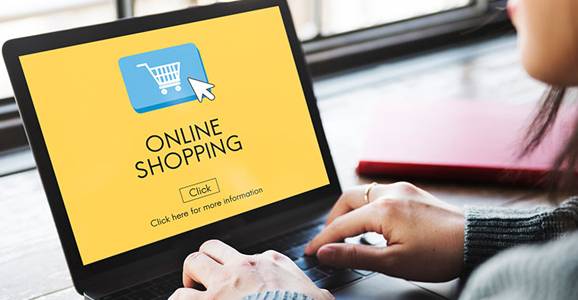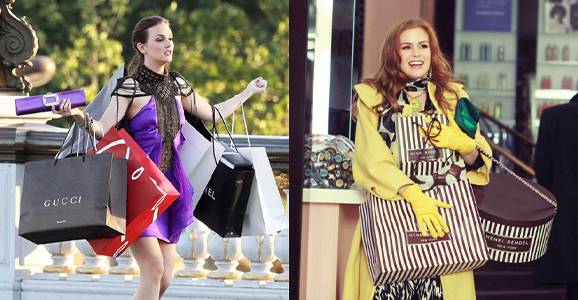Seeking ways to save some few bucks and make better purchases? Explore the world of discounts and coupons, where every dollar matters.
As compared to just over 63% in 2007, did you know that a whopping 92% of shoppers used coupons in 2013? Not surprisingly, coupons have a significant influence on our purchasing decisions. In the current unstable economic environment, where every dollar counts, discounts are more alluring than ever.
Coupons have an enticing effect that makes them difficult to resist, whether they are for a straightforward percentage off or a BOGO offer. What, though, makes them so successful? Let's investigate the psychology of coupon codes and how they affect consumer purchasing strategies.
Uncovering the Psychology of Coupons: When and Why Consumer Buying Behaviour Shifts?
Discounts influence consumers' thoughts and feelings about their purchases by appealing to their psychology in addition to their ability to save money. According to research, shoppers experience joy, happiness, and excitement when they find a good deal. Actually, getting a discount has the potential to raise oxytocin levels more than receiving a gift.
Discounts not only improve people's moods but also, on average, lower stress levels and increase happiness by 11%. Customers feel more in charge and have more agency over their purchases as a result of this satisfying experience. Because of this, consumers actively search for sales to sustain these good sentiments, which frequently prompt them to make purchases they might not have otherwise made.
Below are the results that demonstrate how discounts have a big impact on customer behaviour, conversion rates, and loyalty.
Data Insights About Coupon Codes Influencing Consumer Purchase Behaviour
- About 93% of Shoppers Use a Coupon or Discount Code Throughout the Year
- Consumers spend 37% more than planned when they have coupons.
- 64% of online consumers wait to buy things until they go for sale, whereas more than 59% search for promo codes before buying anything online.
- 83% of consumers say coupons change their buying behavior
- 62% of customers say they “cannot” finish making a purchase online without hunting for a coupon. That jumps to 69% for millennials.
7 Psychological Aspects of Coupon Codes
1. Coupons Bring Happiness
Using coupons doesn't just help you save money; they also improve people's moods. Based on research, using coupons can reduce stress and increase happiness. It can also increase oxytocin levels by up to 38%, which is even more than what happens when you kiss someone! Furthermore, a noteworthy 80% of coupon users claim to feel wiser, probably as a result of their increased ability to assess the worth and savings of the products they buy.
2. The Value Perception of Coupons
Although, almost 70% of consumers love receiving coupons, several factors, such as the product type, exclusivity of the offer, and amount of discount, affect how customers view coupons.
For example: even though the monetary value of two coupons is the same, customers might find one offering a flat $5 discount more appealing than another offering 50% off. Similar to this, coupons that have a time limit or are targeted at particular customer groups are frequently thought to be more valuable because of their rarity and urgency.
3. Coupons Encourage Trying New Things
It may surprise you to learn that 64% of consumers are willing to try new brands if there is a coupon or other alluring offer. Thanks to coupons, customers can test out new goods and services with less risk, which increases their interest in trying something new.
For example: a coupon can encourage a customer to try a new pizza place even though it's not their regular hangout because the lowered price lessens the perceived risk of being disappointed.
4. Promoting Loyalty
Providing clients with special discounts and coupons encourages gratitude and loyalty. Customers are more likely to come back to the store for additional purchases if they believe they are getting special treatment through exclusive offers.
Discounts and coupons came in as the top-ranking tactic for driving loyalty with 61% of consumers saying they use them and this reinforces good feelings about the brand.
5. Coupons' Emotional Attachment
Customers may experience a variety of feelings in response to coupons, such as joy, curiosity, thankfulness, and guilt. The possibility of finding a surprise offer or landing a good deal can pique curiosity and excitement as 40% of consumers said they feel smart when they can find the best deals
Personalized coupons, on the other hand, have the power to arouse sentiments of appreciation and gratitude, thereby fortifying the emotional connection between consumers and the brand. 75% of consumers believe that personalized offers from retailers are different than relevant offers but, if a customer doesn't use a coupon or return a perceived favor, they might also feel guilty or obligated.
6. The Fear of Missing Out (FOMO)
It is a phenomenon that is made worse by social media, which in today's hyperconnected world constantly feeds us updates about what other people are up to, buying, and experiencing. Limited-time coupons prey on this anxiety by implying that we'll miss out on an amazing deal if we don't act quickly.
7. The Endowment Effect
It states that people tend to value their possessions more highly. Customers are more likely to use coupons because they give them a sense of ownership. 61% of online shoppers chose to receive surprise perks and discounts as their preferred personalized experience.
For instance, picture a clothes retailer giving a client a personalized 15% off coupon. The customer is encouraged to visit the store and redeem the discount because they feel like they own it.
Factors that Influence Consumer Purchasing Decisions When Using Coupon Codes
1. Creating a Sense of Urgency
Promo codes frequently have a time restriction or restricted supply, which gives buyers the impression that they must act quickly to avoid losing out. 48% of people say they can speed up the decision-making process when have coupons which contributes to factors highly influencing consumer behaviour.
Example: "Hurry! For the next 24 hours only, take 25% off your order when you use the promo code SPRINGSALE25."
2. Making an Appeal to Loss Aversion
Promo codes reinforce the notion that people would rather lose something than gain it. Businesses encourage customers to take advantage of discounts by framing them as possible losses if not used.
Example: "Don't pass up our special coupon code! To guarantee you get $10 off your next purchase, use the code SAVE10NOW."
3. Social proof's influence
Seeing others use coupon codes can persuade more people to follow suit. 37% of shoppers receive promotional offers via social media. Because of the social proof effect, promo codes are more alluring and may persuade hesitant buyers to buy.
Example: "Join the thousands of happy clients who have already used our promo codes to save money! Today, use the code HAPPYSHOPPER to receive your discount.
4. Establishing Reciprocity
Distributing promotional codes can instill a sense of duty in consumers, increasing the likelihood that they will make a purchase afterward. 42% of loyal consumers use targeted offers from their
favorite store vs. 27% of non-loyal customers. Customers feel as though they owe the company for the discount—it's almost like a mental contract.
Example: "Here's a special promo code just for you: LOYAL15 as a thank you for being a loyal customer. Get 15% off your subsequent purchase now!"
5. Loyalty programs and coupon stacking
Smart consumers enjoy combining several discounts, and companies can promote this behaviour by offering loyalty programs. 74% of consumers choose a store based on a strong loyalty or discount program and thus companies attract repeat customers by rewarding loyal customers with special offers.
Example: "Unlock exclusive discounts and earn points with every purchase! For even greater savings, combine your points with the promo code BONUS20."
6. Using Behavioural Economics:
- Anchoring: People evaluate discounts primarily based on the price they initially see, which
makes any decrease appear substantial. Temporary promotional codes establish a new
benchmark price, improving the appearance of the discount. - Framing: The way an offer is made counts. Free shipping ranks highest on customers' wish lists
for Christmas offers (58%), followed by price reductions (48%), and limited-time "buy one, get
one free" deals (37%). It sounds more enticing to say "Save $50&" than "Get 10% off." Offers with
a time limit highlight the savings, which increases the appeal of the discount.
Example: "Attend our 48-hour flash sale! Use the coupon code FLASHDEAL30 to save 30% on everything and set your expectations."
7. Seasonal Discounts
To increase sales, seasonal sales—such as Black Friday or back-to-school sales—take advantage of shifts in consumer behaviour. These time-limited deals instill a sense of urgency and work particularly well for liquidating stock.
Example: 61% of back-to-school shoppers say that online promotions will influence where they buy.
8. Bundling Deals
Combining goods or services at a discount is a clever strategy to raise the perceived value. Bundling adds value to a product, such as a software package or spa gift set, by drawing customers in.
Example: "Upgrade your home office with our bundle of productivity! Use the coupon code WORKFROMHOME to get a laptop, desk, and chair all for a single, reduced price."
Conclusion
Coupon codes are a powerful marketing tactic, as evidenced by the statistics showing that 89% of millennials and 80% of consumers are more likely to purchase from a new brand if it provides a discount coupon. Retailers trying to draw in new customers will find them invaluable as they can incite impulsive buying behaviour due to the rush of excitement and urgency they create.


.jpg)